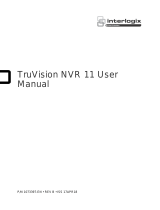
Chapter 4 Troubleshooting
4-1. No Picture
Problem Possible cause and remedy
1. No picture
• Power indicator does not light.
• Check whether the power supply is connected properly.
Connect to the AC adapter or to a network hub that supports
PoE+.
• Check whether the power cord of the AC adapter or the
network hub is correctly connected.
• Power indicator is lighting red.
• Press
on the front of the product.
• Power indicator is ashing red. • Connect to a network hub that supports PoE+ or to the AC
adapter (separately sold option).
• Power indicator is lighting blue. • Check whether this product and the monitor are correctly
connected using the HDMI cable. Connect to the HDMI 1
port, not the HDMI 2 port.
• Pull out the HDMI cable and connect it again.
• Check whether the input signal on the monitor is set to HDMI.
Conrm that the monitor settings are correct.
For details on the settings, refer to the User’s Manual of the
monitor.
4-2. Other Problems
Problem Possible cause and remedy
1. The mouse / keyboard does not work • Check whether the USB cable is connected properly.
• Pull out the USB cable and connect it again.
2. The mouse / keyboard responses lag • Reduce the resolution and / or bit rate set for the network
camera. (For details, refer to the user’s manual of the
network camera used or the “Installation Manual” of this
product.)
3. The network camera display position
cannot be changed
• The user level authorized to operate the camera is “ADMIN”.
(For more information, see “3-2. Log In” (page 8).)
• Network camera is inoperable during sequential display. (For
details, refer to the “Installation Manual”.)
4. Restarts all of a sudden • When the temperature inside the product rises high, this
product may restart repeatedly. Check the temperature
around this product. The internal temperature may rise high
when the product is used in a narrow or poorly ventilated
place or when the product is used with an object placed on
top of it.
14
Chapter 4 Troubleshooting















